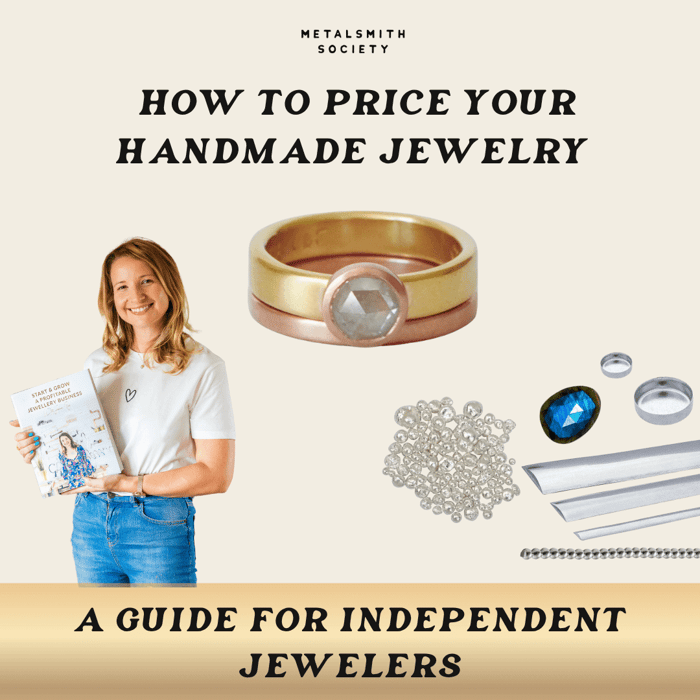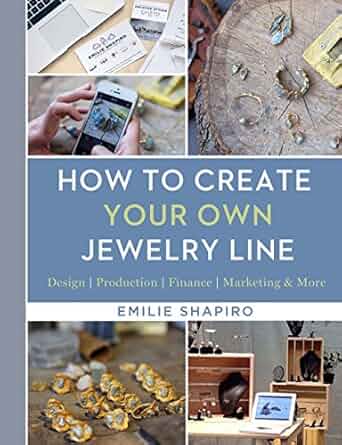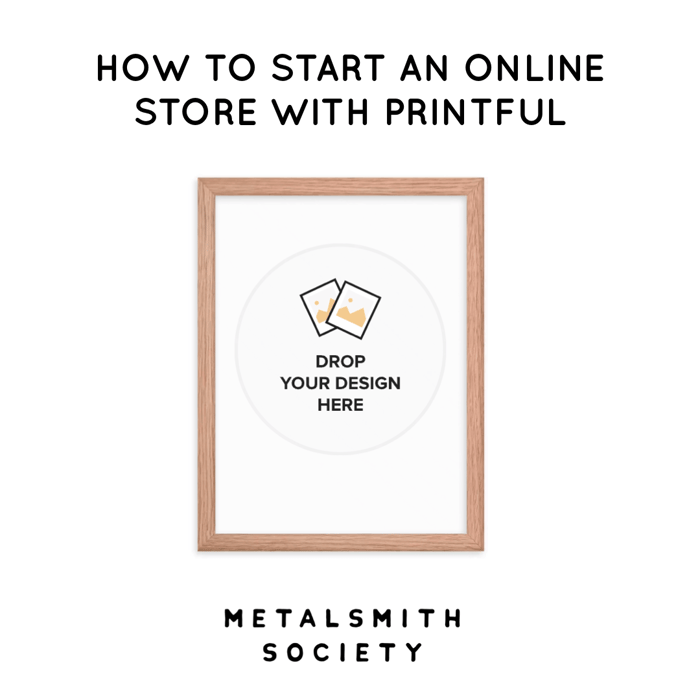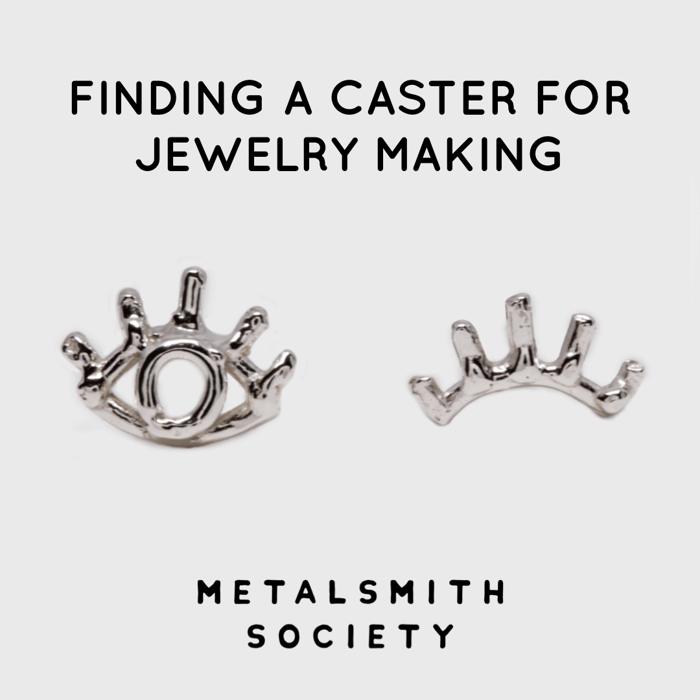Pricing your handmade jewelry can feel overwhelming — but at the end of the day, your pricing strategy should do one essential thing: make your business profitable.
Recently, I had special guest Jessica Rose, founder of Jewellers Academy, on my podcast Jewelry Making Tips with Metalsmith Society. We had an honest conversation about pricing — from formulas and mindset shifts to common mistakes and why so many jewelers undercharge.
 This blog pulls together insights from that episode, plus years of experience running my own jewelry business. Whether you're just starting to sell your work or you’ve been in the game for a while, this guide will help you:
This blog pulls together insights from that episode, plus years of experience running my own jewelry business. Whether you're just starting to sell your work or you’ve been in the game for a while, this guide will help you:
Understand all the expenses that go into your pricing
Learn practical pricing formulas (including Jessica’s go-to method)
Prepare for wholesale pricing
Pay yourself fairly for your labor
And most importantly — price with confidence
Let’s dive in.
First, Let’s Talk About Expenses
It’s easy to forget just how many things go into running a jewelry business — especially when you're focused on designing, creating, and getting orders out the door. But before you can price your work accurately, you need to know what it’s actually costing you to make it.
Spoiler: it’s more than just metal and gemstones.
Let’s break down the real (and often overlooked) expenses that need to be factored into your pricing formula.
Materials + Production
Raw materials (metals, gemstones)
Consumables (solder, flux, polishing compounds, sandpaper, saw blades, etc.)
Outsourced labor (stone setting, engraving, casting)
Tool maintenance and new equipment purchases
Studio Overhead
Studio rent and utilities (electricity, water, heat)
Cleaning supplies (hand soap, paper towels, toilet paper, surface cleaners)
Safety gear and ventilation upkeep
Office supplies (printer ink, pens, shipping labels)
Business Operations
Website hosting and e-commerce platforms (Shopify, Etsy, Squarespace, etc.)
Credit card processing fees
Accounting software and tax prep services
Business registration, LLC filings, sales tax permit renewals
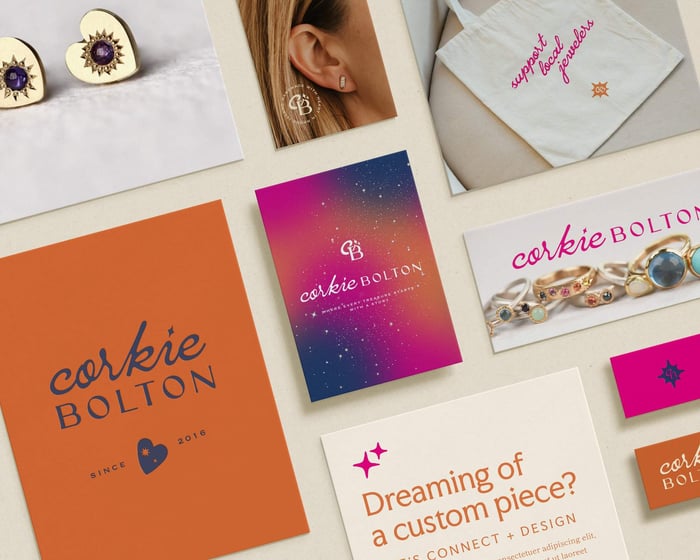
Visuals + Marketing
Photography equipment or hiring a photographer
Subscriptions for design and content creation apps (Canva, Lightroom, etc.)
Marketing and PR (ads, influencer partnerships, giveaways)
Printed materials (business cards, flyers, thank-you cards)
Social media scheduling tools
Packaging + Shipping
Branded packaging (boxes, pouches, tissue paper)
Postage, shipping supplies, and insurance
Order tracking software or systems
Education + Development
Jewelry workshops and online classes
Books and memberships related to business or craft
Coaching or mentorship programs
Travel + Events
Flights, gas, tolls, and mileage for business trips (like Tucson Gem Show or a workshop)
Hotels or accommodations
Per diem (meals, parking, etc.)
Travel insurance (if applicable)
Event registration fees
Transportation of tools or show materials
Life Logistics
Labor (your time and any assistants you hire)
Childcare expenses (if applicable)
Not all of these expenses will go directly into your COGS (Cost of Goods Sold), but they do impact the overall financial health of your business. And if your goal is long-term sustainability—not just survive-on-coffee-and-vibes levels of sustainable—you need to account for the full picture.
Yes, it might feel overwhelming at first, but tracking your expenses doesn’t just help with pricing. It can also reveal where you might be overspending on fixed costs or where there's room to improve efficiency. The more clarity you have, the more confidently you can price your work—and build a business that actually supports your life.
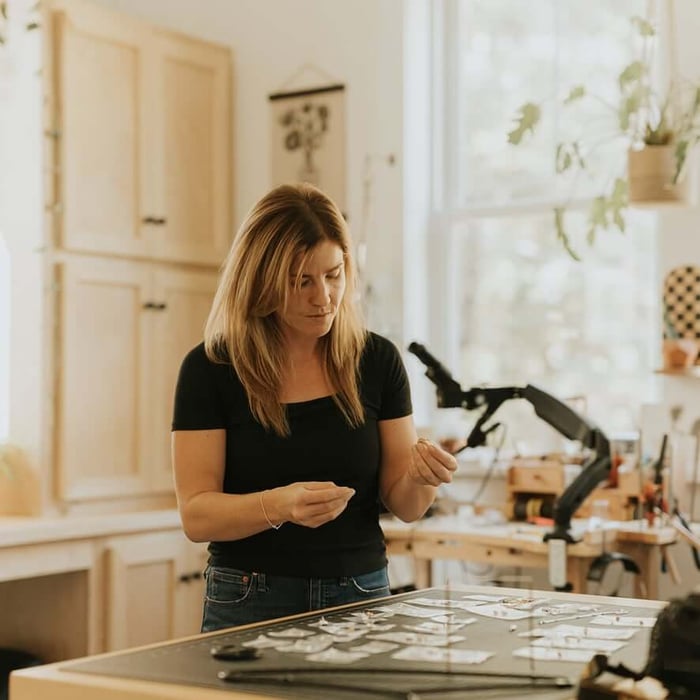
Inventory + COGS = Your Secret Weapon
Always label your stones and metals with what you paid. When you finish a piece and add it to your inventory (I use Excel), jot down the actual cost of materials — this is your Cost of Goods Sold (COGS). If you’re not tracking this, you might be undercharging and not even realize it. COGS is the first layer of your pricing foundation.
Pro tip: create a raw materials inventory! I use a good ol’ Excel spreadsheet to track everything — from earring posts to sheet metal. This way, when I go to price a piece, I know exactly what each component cost me and I’m not just guessing.
Metal Prices Fluctuate — Build That In
Precious metal prices (especially gold and silver) don’t stay still for long. Over time, the trend is upward — which means the materials you bought six months ago might be significantly more expensive when you go to restock.
Let’s say you priced a collection based on silver sheet you bought at $25/oz. You sell those pieces, and when it's time to replenish your materials, that same sheet now costs $30/oz. If you stick with your original pricing, your profit margin shrinks — sometimes without you even noticing.
Solution: Price for Replacement, Not Purchase
When calculating your Cost of Goods Sold (COGS), always use the current replacement cost of your materials — not what you paid originally. That way, you're pricing in a way that protects your future margins and ensures your business stays profitable as material costs rise.
If you're not already doing this, consider reviewing and updating your pricing every 3–6 months to stay on top of market shifts.
Pay. Yourself.
No, really. You’re not just a jeweler — you’re a designer, stone-setter, packer, shipper, content creator, and customer service rep. That deserves an actual hourly wage. This labor should be added to your Cost of Goods Sold (COGS) for each finished piece.
Here’s where things can get a little tricky: labor isn’t always straightforward to calculate — especially if, like me, you’re often working on multiple pieces at once or doing a small production run of the same style.
It’s impossible for me to tell you, dear reader, exactly what you should charge for your time. Maybe you worked on a pair of earrings for 20 minutes, and you’ve decided your labor rate is $20/hour — in that case, your labor cost for the piece would be around $6.66. If you make ten pairs of that same earring in 30 minutes (which is more efficient), your labor cost per piece goes down even more.
What’s important is that you start somewhere. Track your time, even loosely, and build a system that works for you. The more you practice pricing this way, the easier it becomes to gauge what’s fair — both for you and your customer.
Also, don’t forget: if you outsource any part of the process — like casting, stone setting, or engraving — be sure to include that labor in your COGS too. It’s all part of what it takes to bring your jewelry to life.
The goal? Pay yourself for your time like the skilled artist you are. Because labor is not just time — it’s expertise, problem-solving, and care.
Easy Jewelry Pricing Formulas You Can Start Using Today
These are the formulas that Jessica and I discussed on the podcast — I wanted to share because they’re simplistic, effective, and a great starting point whether you’re just beginning or reevaluating how you charge.
These formulas help take the guesswork out of pricing, while still giving you room to adjust based on your materials, market, and goals.
Jessica Rose’s Simple Jewelry Pricing Formula (Direct-to-Customer Sales)
Direct-to-customer (DTC) sales means you're selling your work directly to the person who will wear it — with no middleman (like a boutique, gallery, or wholesaler) involved.
So when you say:
This is a great place to start if you’re selling your work online, at markets, or in person:
You're referring to DTC channels like:
Your own website or Etsy shop
Craft fairs, holiday markets, pop-ups
In-person sales to friends, family, or studio visitors
Instagram or social media DMs (yes, that counts!)
In DTC sales, you get to keep 100% of the sale (minus fees), and you have full control over pricing, presentation, and customer relationships.
Formula: (Materials + Labor) × 2 + Extras = Retail Price
Materials = all raw and consumable materials (don’t forget to include shipping and even your scraps)
Labor = your time spent making the piece
Extras = packaging, hallmarking (if applicable), taxes, or anything not marked up
“The markup is there to cover your overhead — tools, subscriptions, marketing, training — all the things that keep your business running.”
Jessica Rose’s Formula For Fine Jewelry (Direct-to-Customer Sales)
When materials are expensive, Jessica recommends a more nuanced approach:
Formula: (High-Cost Materials × 1.5) + (Other Materials + Labor) × 2 + Extras = Retail Price
Use a lower markup (like 1.2–1.5x) on expensive materials to keep your pricing realistic
Still multiply labor + standard materials by 2
Add your extras at the end
“You still need profit, but marking up $10,000 of gold by 2.5x might push you out of your market. Adjust where needed.”
Planning for Wholesale Pricing (And Why It Might Need Its Own Strategy)
Even if you're not selling wholesale right now, it’s smart to plan for the possibility. Wholesale means a store or gallery is buying your work upfront (yay!) — but they’ll typically pay only 50% of your retail price.
Now, if you’re using the formula above for pricing your direct-to-customer pieces, that might not leave enough room for profit when you cut the price in half for wholesale. In fact, you could end up breaking even… or losing money.
So what’s the solution?
Consider Creating a Wholesale-Only Collection
To make wholesale work for your business, you may need to design a specific collection that’s more efficient to produce — without compromising on quality or style. That could mean:
Using designs you can batch produce or cast
Minimizing time-intensive techniques like hand engraving
Sticking with materials that offer better margins
Keeping the design slightly simpler, so labor costs stay low
If you're looking for a formula that bakes in wholesale margins from the start, this one’s for you:
Wholesale Formula: The All-In Small Biz Approach
Materials + $20/hr labor + 10% overhead = Wholesale
Wholesale × 2 or 2.5 = Retail
This formula is great if you’re just starting out or selling lower-cost pieces. That 10% overhead buffer helps cover things like your studio rent, tool wear, and admin time — and because you’re working from wholesale up, you’re setting yourself up for consistency across platforms.
“Wholesale is a different business model. It’s not about just doubling your direct-to-customer price — it’s about building in room for everyone to profit.” – Jessica Rose, Jewellers Academy
Also, keep in mind: galleries or stores will expect that your MSRP (manufacturer’s suggested retail price) is the same across the board — on your website, at shows, and in their shop.
A Note for Fine Jewelers Who Wholesale
However, if you're working in gold and diamonds, you may find that you can wholesale your pieces at 50% and still make a profit — especially if you've priced with the current market in mind.
It may not be as profitable as selling direct, but there are real benefits to having your work in a store:
Customers can see and try it on in person
You’re reaching a new audience
It builds credibility and opens the door to custom work
Not every design is wholesale-friendly — and that’s totally okay!
Checking Out the Competition (In a Healthy Way)
I know, I know—comparison is the thief of joy. But when it comes to pricing, it’s a useful tool.
Look up jewelers with similar styles, materials, and market vibes. What are they charging? Are your prices wildly different? Use this as a compass—not a copy-paste moment. Some makers undercharge. That’s their journey. You’re here to price smart.
Hot tip: Avoid using Etsy as your primary pricing benchmark. While it’s a huge platform, jewelry prices there tend to be extremely competitive — and often below wholesale. That’s not the standard you want to use when building a sustainable business.
Is It Time to Raise Your Prices?
Let’s be real — everything is getting more expensive. From metals and packaging to shipping and studio rent, inflation is impacting your bottom line. If it feels like your costs have crept up lately… you’re not imagining things.
And while raising your prices might feel scary (we’ve all been there), not raising them can slowly erode your profit. If Starbucks and McDonald’s are adjusting their prices, you can too — your handmade, thoughtfully crafted jewelry is absolutely worth it.
So how do you do it without losing your mind — or your customers?
Here’s how to raise prices with confidence:
Give your customers a heads-up. A quick post on Instagram or an email goes a long way.
Share what goes into your work — most people have no idea how much effort, time, and care it takes.
Don’t make giant leaps. Small, gradual increases are easier for everyone to digest.
Start with new collections. Apply your updated pricing going forward and stick to it.
Reevaluating your pricing every 6–12 months is just good business. Don’t wait until you're stressed and stretched thin — stay ahead of rising costs, and price in a way that supports your work and your life.
Keep Learning: More Resources for Pricing + Budgeting
If this blog gave you clarity (or even just a solid starting point) for pricing your jewelry, here are more resources to help you build a profitable and sustainable business:
🎧 Podcast Episode: How to Price Your Jewelry
I sat down with Jessica Rose from Jewellers Academy to talk all things pricing — from common mistakes to mindset shifts and practical strategies.
🎙️ Jewelry Making Tips with Metalsmith Society — Listen here
🧾 Free Pricing Masterclass from Jessica Rose : How to Price Your Jewelry for Profit
Jessica’s free video class walks you through pricing strategies step-by-step — and includes a downloadable spreadsheet to help you calculate your own prices with confidence.
Watch the free masterclass →
📘 Geller’s Blue Book
The industry standard for repair pricing. Especially helpful for jewelers offering in-person repairs or working out of a brick-and-mortar shop. It’s an investment (~$500), but a valuable one for serious repair-based businesses.
💰 YNAB (You Need a Budget)
A business budgeting tool that makes it easier to track expenses, understand your overhead, and price your work with clarity.
Final Thoughts on Pricing Your Jewelry
I love a good formula — they’re a helpful place to start. But remember: pricing is never one-size-fits-all. You’ll always need to tweak things based on your process, your materials, and your goals. And that’s kind of the point.
There’s no perfect formula that works for everyone. Pricing is personal. It’s about knowing your numbers, valuing your time, and having the confidence to charge what your work is really worth.
Undercharging might feel easier at first, but it won’t build the business (or life) you’re dreaming of. So take a deep breath, trust your skills, and price like you mean it.
You've got this.
💛 Support + Stay Connected
If you found this article helpful, please consider supporting Metalsmith Society! You can:
🛍️ Grab something from the Society Shop every purchase really helps.
💎 Join us on Patreon to help keep the tips flowing, the blog rolling, and the podcast going strong.
📲 Follow along on Instagram @metalsmithsociety
We share daily jewelry-making tips, celebrate your wins, and nerd out over tools together. We’d love to have you in the community.
📌 Pin this blog post on Pinterest to save it for later, and don’t forget to follow Metalsmith Society on Pinterest for even more jewelry-making ideas, tips, and inspiration.
P.S. Want to see how I price my jewelry? Check out my shop here.

About the Author: Corkie Bolton is a jeweler, educator, and founder of Metalsmith Society — a vibrant online community dedicated to sharing free jewelry-making tips, tutorials, and resources. With a BFA from Pratt Institute and over a decade of bench experience, Corkie is passionate about helping jewelers grow their skills and build sustainable businesses.
When she’s not at the bench or recording her podcast Jewelry Making Tips with Metalsmith Society, you’ll find her chasing around her kids, training her golden retriever pup Winnie, or geeking out over tools in her Rhode Island studio.
Connect with Corkie on Instagram @metalsmithsociety + @corkieboltonjewelry or explore more tips and tools at metalsmithsociety.com.

